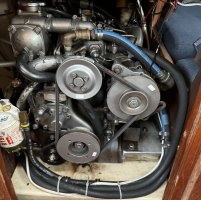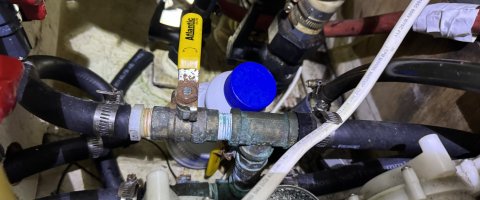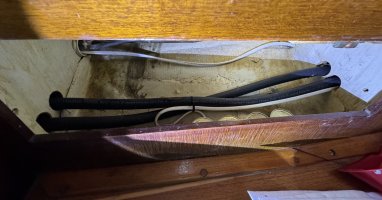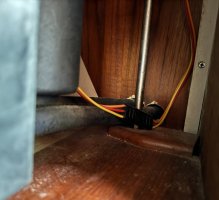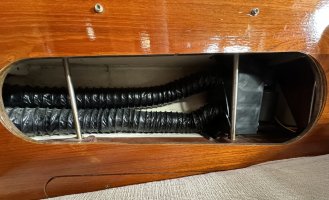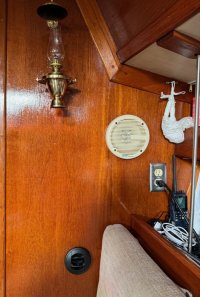I'm not sure where this is going to end up on my priority list, but with the colder weather creeping in lately it's definitely occupied my mind more frequently. There's a lot of conversation on here around hydronic vs forced air vs bulkhead heaters, but one item I can't get around is where and how to run the hoses. Specifically how do I get from the aft lazarett to the cabin on a forward head layout.
On the starboard side there's the ice box if I went low and cabinets if I went high. There's a little room under the ice boxes, but once I got to the sette, I'd run into the water tank. Going high directly under the side deck would be difficult to get down to where the heat exchanger or vent outlet would be and would be difficult to tuck under the headliner.
The port seems a little more doable, but I'd have to expose the fuel tank compartment to rout along the side of the tank. I'm also not finding a simple path between that compartment and the nav desk. Once I'm in the sette locker area, it's pretty easy to find a spot for a vent or heat exchanger and continue to the V birth where a second unit could be located under the V birth.
So what have others done on their forward head boats (32, 35, 38)? What areas did you find difficult to work around and how did you solve the problem? Pics of the install would be great too.
On the starboard side there's the ice box if I went low and cabinets if I went high. There's a little room under the ice boxes, but once I got to the sette, I'd run into the water tank. Going high directly under the side deck would be difficult to get down to where the heat exchanger or vent outlet would be and would be difficult to tuck under the headliner.
The port seems a little more doable, but I'd have to expose the fuel tank compartment to rout along the side of the tank. I'm also not finding a simple path between that compartment and the nav desk. Once I'm in the sette locker area, it's pretty easy to find a spot for a vent or heat exchanger and continue to the V birth where a second unit could be located under the V birth.
So what have others done on their forward head boats (32, 35, 38)? What areas did you find difficult to work around and how did you solve the problem? Pics of the install would be great too.

